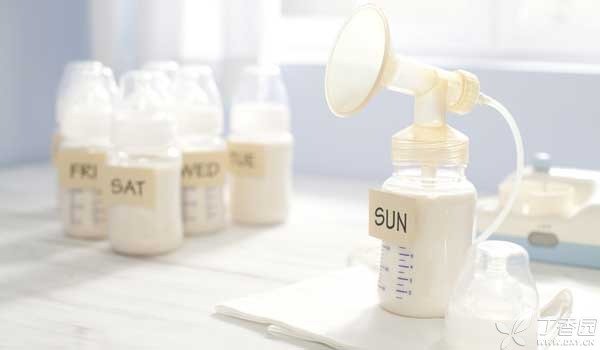
Breastfeeding ABC
Awareness)
Pay attention to the baby’s behavior. If the baby looks hungry, feed him. Signs indicating the baby’s hunger include the sound of smacking the mouth, the small hand reaching to the mouth, turning to your arms, etc.
Be patient)
It usually takes 10-20 minutes for a baby to suck one breast.
Comfort)
When sitting and nursing, put your feet high and put a pillow under your arms to support you and your baby.
Avoid nipple confusion
Early bottle feeding may cause nipple confusion. Babies forget that they should suck their mother’s nipples how. This is not common, but it can be easily avoided.
If you are going to give your baby a bottle or pacifier, you’d better wait until 2-4 weeks old. But don’t wait too long, or your baby may become accustomed to breast milk and unwilling to accept the bottle pacifier.
If you plan to continue breast-feeding after work and do not have the conditions to breast-feed, it is recommended to prepare the baby for a process of adapting to the bottle earlier. Usually, the baby can start to try to breast-feed the baby with the bottle after two months, 1-2 times a week, so as to make the baby accept the bottle and not resist in the future.

How to relieve nipple pain?
The initial slight pain and tenderness are normal. Once the mother finds the right breast-feeding position and the baby can snuggle comfortably in her arms, the pain will gradually disappear. However, if the pain worsens or lasts for a long time, please seek medical treatment in time.
Does the baby need to be fed when he is asleep?
Newborns less than one week old need to be awakened. Newborns need to be fed more than 8 times a day at intervals of no more than 4 hours.
Children over 1-2 months old will wake up and nurse themselves when hungry, and they will sleep all the time when they are not hungry, so they do not need to wake up again to nurse.
The way to wake up your baby is not only to pat your small fart. Uncovering the sheets, changing diapers, gently massaging, or holding it up and sticking it to your chest are all worth a try.
Freezing and thawing of breast milk
Storage in refrigerator refrigerator compartment
Refrigerated at 0-4 ℃ can be stored for 7 days.
Cryopreservation
The cryopreservation of breast milk is related to the condition of the freezer.
If it is a small freezer box inside the refrigerator compartment, the shelf life is two weeks.
If it is a freezing compartment separate from the refrigerating compartment, but it often opens and closes the door to pick up articles, the storage period is 3-4 months;
If it is a deep freezing chamber, the temperature is kept below 0 ℃ and the door is not opened frequently, the storage period is as long as 6 months.
It is better to use plastic products (such as breast milk storage bags) that are suitable for freezing and are well sealed for breast milk freezing storage, followed by glass products, and it is better not to use metal products, because the active factors in breast milk will adhere to glass or metal, thus reducing the nutrients of breast milk.
How to unfreeze
When frozen breast milk is thawed, the sealed bag should be washed with cold water first, and hot water should be gradually added until the breast milk is completely thawed and rises to a temperature suitable for feeding. Do not directly heat the breast milk with the fire or microwave oven, which will destroy the nutrients in the breast milk and easily burn the baby.
After thawing, pour it directly into the bottle and the baby can be fed. Thawed breast milk must be eaten within 24 hours and cannot be frozen again.
Little knowledge of milking and pumping milk
AAP (American Academy of Pediatrics) recommends continuous breastfeeding until the baby is 1 year old, exclusive breastfeeding until June, and WHO (World Health Organization) recommends continuous breastfeeding for up to 2 years.
In our country, most mothers have to face the choice of interrupting breast milk due to returning to work. Many mothers choose to be breast-feeding mothers.
While one cannot abandon one’s work and one cannot give up breast-feeding, it is especially important to master the skills of sucking and storing milk. With this knowledge, it is no longer difficult to work hard and insist on breast-feeding.
Manual milking
Putting milk out of the breast with your fingers is a practical technique that every mother should master.
The best way to learn manual milking is to consult a hospital nurse or an experienced mother around you and let them teach you hand in hand. No matter who you are, you may be clumsy at first, and it usually takes many exercises to be handy. So don’t be discouraged at the beginning because you don’t do well enough.

Breast pump
If you often need milking, a high-quality breast pump is also a very good choice.
Milking tips
(1) Start time of milking/sucking
If you are going back to work, you’d better start preparing to practice sucking milk 1-2 weeks in advance. Be sure to learn how to use the breast pump before sucking milk. Practice more at home. You can suck it after each meal or sometime between meals. The pumped milk can be stored for the baby to eat after work.
(2) Amount of milk sucked
The amount of initial milk sucking is not much. After sticking to the regular milk sucking for a few days, the amount of milk pumped out will gradually increase, and when the amount of milk pumped out is increasing, the amount of breast milk produced by yourself will also increase. This is a virtuous circle. When milk production increases more, you need to increase the amount of drinking water to replenish water.
(3) Duration of sucking milk
After being proficient in practice, The duration of each sucking and each breastfeeding is basically the same, On the premise of having a good breast pump, At least 10-15 minutes on one side. After starting work, you should also insist on sucking milk once every 2-3 hours, and at least 10-15 minutes on each side every time. Only in this way can you simulate the frequency of baby feeding. After you go home, you must contact with your baby more, insist on direct breast-feeding, increase the stimulation of baby sucking on lactation, and help produce more breast milk.
(4) What if the amount of breast milk prepared is not enough
If the baby’s milk volume increases rapidly, The amount of breast milk prepared may not be sufficient, so it is necessary to increase the number of times of breast-feeding, or increase the number of times of direct breast-feeding. The aim is to increase the stimulation of lactation reflex and increase milk production. Mothers can carry breast pumps at work and arrange several times of breast-feeding during intermittent work. You can also adjust the interval time to nurse more closely at home, once every 2-3 hours. At work, suck milk sparsely and once every 3-4 hours.
Responsible Editor: Zhang Jingyuan
This article is exclusively authorized to be used by Clove Garden and refuses any other form of reprinting.
